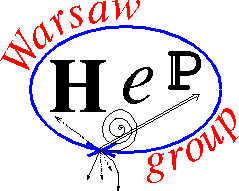Analysis of the radio signal and search for events in the Ultra High Energy Cosmic Rays related data from the GRAND experiment
Lech Wiktor Piotrowski, PhD (Lech-Wiktor.Piotrowski@fuw.edu.pl)
The origin of the Ultra-High Energy (UHE) Cosmic Rays (CR) is one of the biggest mysteries of modern physics. The answer may be revealed by the Giant Radio Array for Neutrino Detection (GRAND), which is a next-generation radio-observatory designed to collect UHE cosmic particles of energies exceeding 1017 eV – such as cosmic rays, neutrinos and photons. The goal is to solve the long-standing mystery of their origin.
GRAND will consist of an array of 200,000 radio antennas deployed over 200,000 square kilometres, about the size of Great Britain, in favourable mountainous locations in the world. GRAND is sensitive to Earth-skimming cosmic tau-neutrinos that can produce tau particles underground through charged-current interaction. Taus travel to the surface of the Earth and decay in the atmosphere, generating Extensive Air Showers (EAS), which in turn generate (among others) a radio signal of a few to hundreds of MHz. Inclined showers can leave footprints of several kilometres on the ground after travelling large distances in the atmosphere, and be detected by GRAND.
Working with data within the GRAND framework allows for several exercises for a student:
1) Analysis of the background signal from the data sample collected in China. The results should be finding basic characteristics of the background noise.
2) Search for background events in the collected data sample. In case of positive results, characterisation of such events.
3) Filtering the simulated radio signal from UHECR events. This would involve investigating different digital filtering techniques as well as designing algorithms for selection cuts to ensure good background suppression.
For topics (2) and (3) several approaches are possible, starting with manual inspection of the data, through “conventional” triggering and data analysis algorithms, up to involving machine learning methods.
The implementation of the exercise requires basic programming and data analysis skills (knowledge of Python is preferred).

